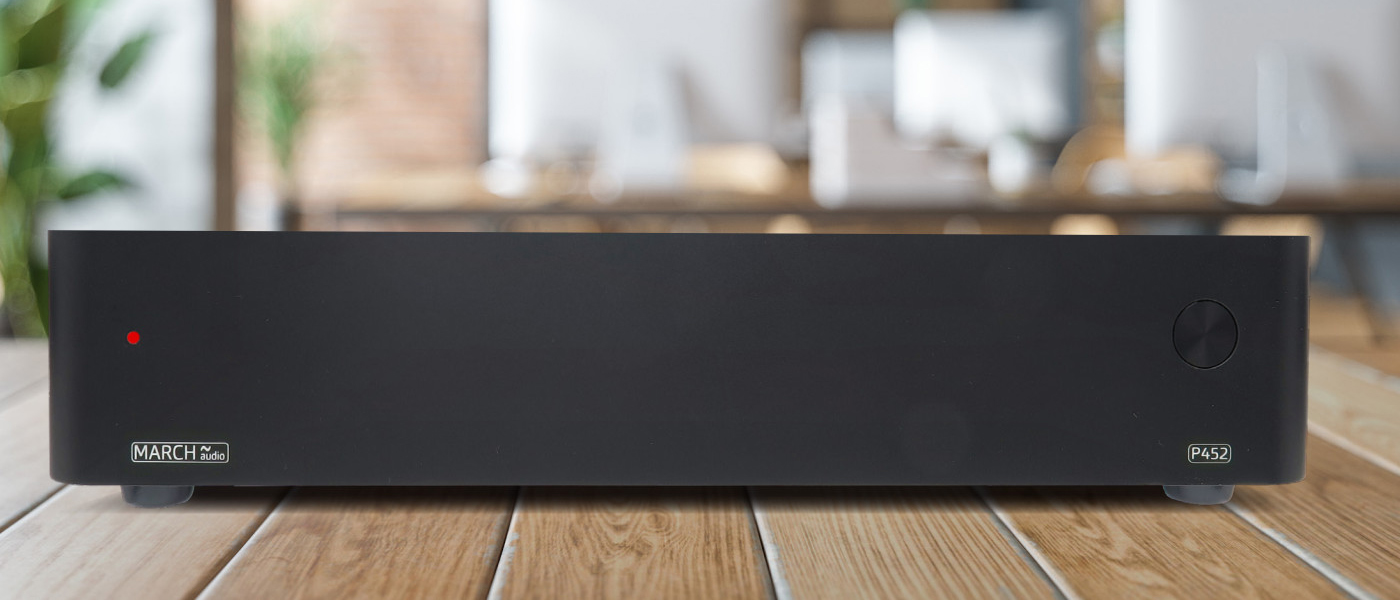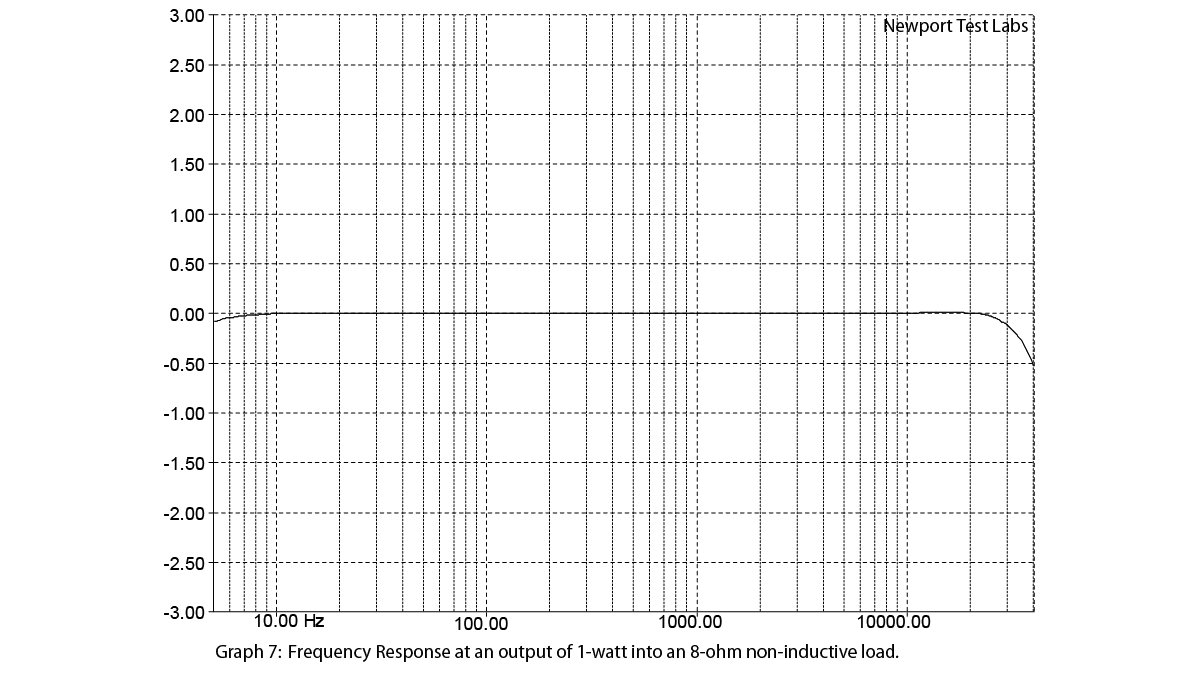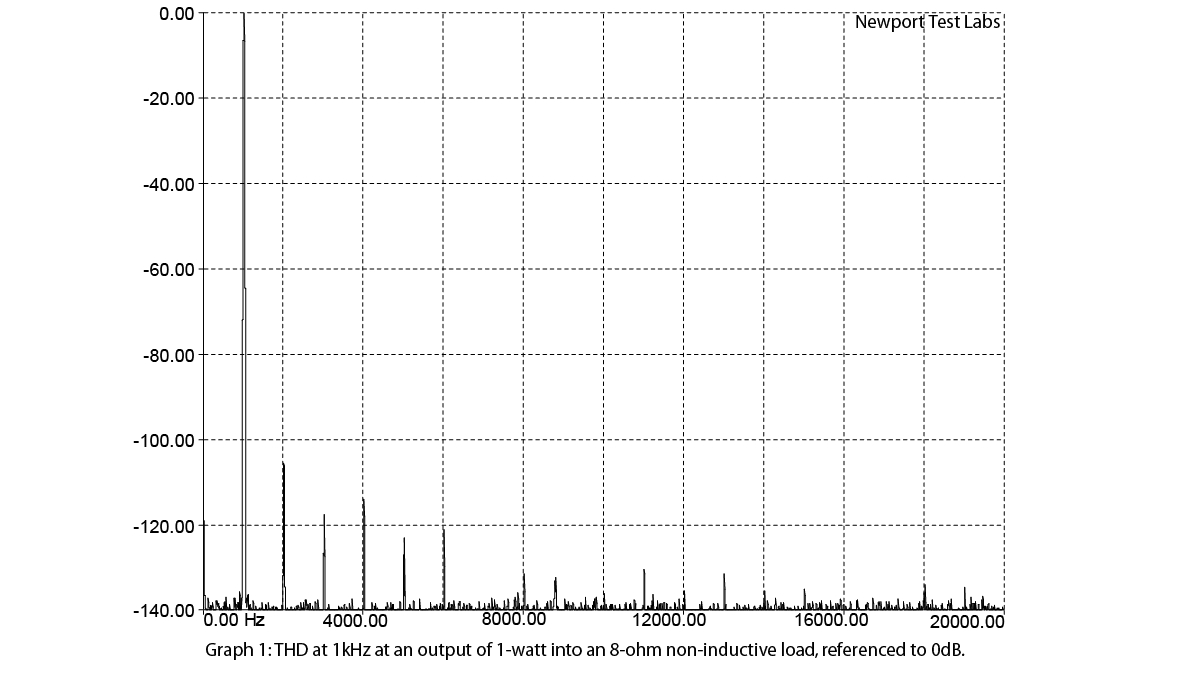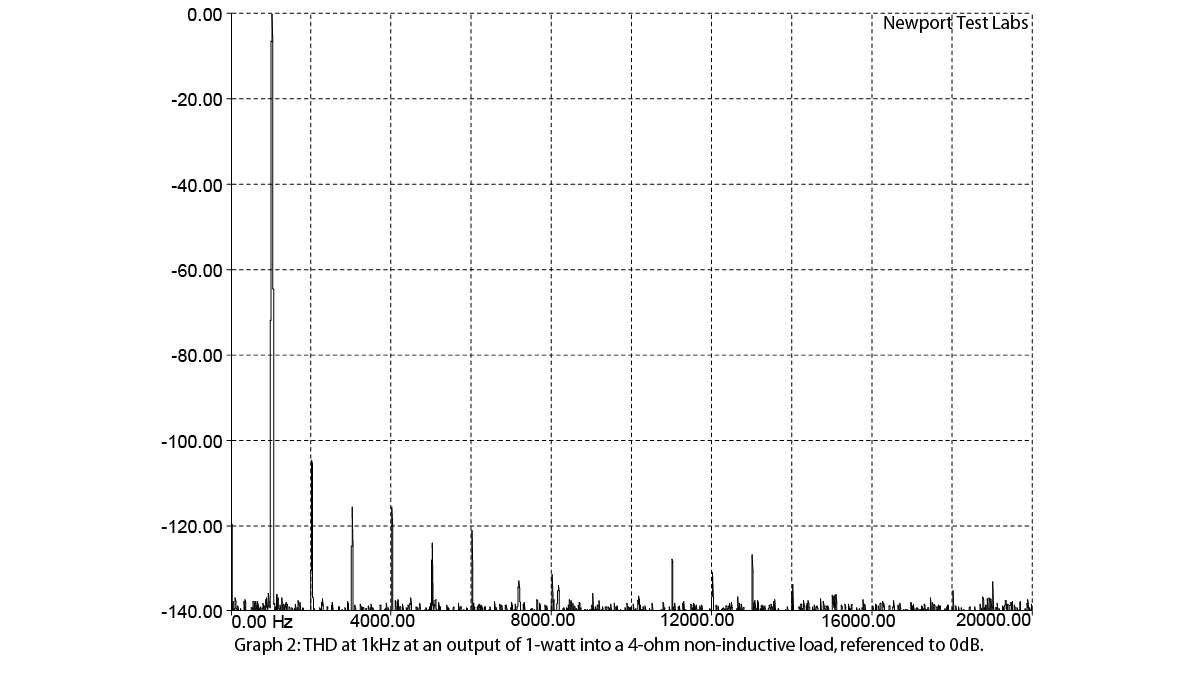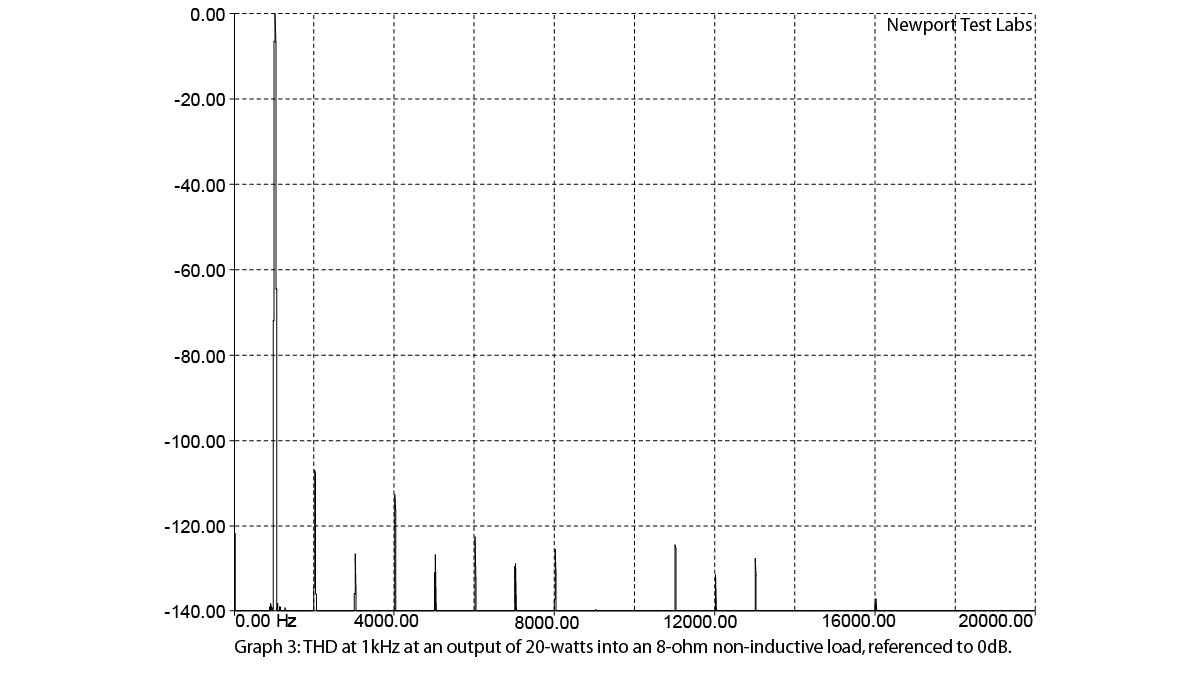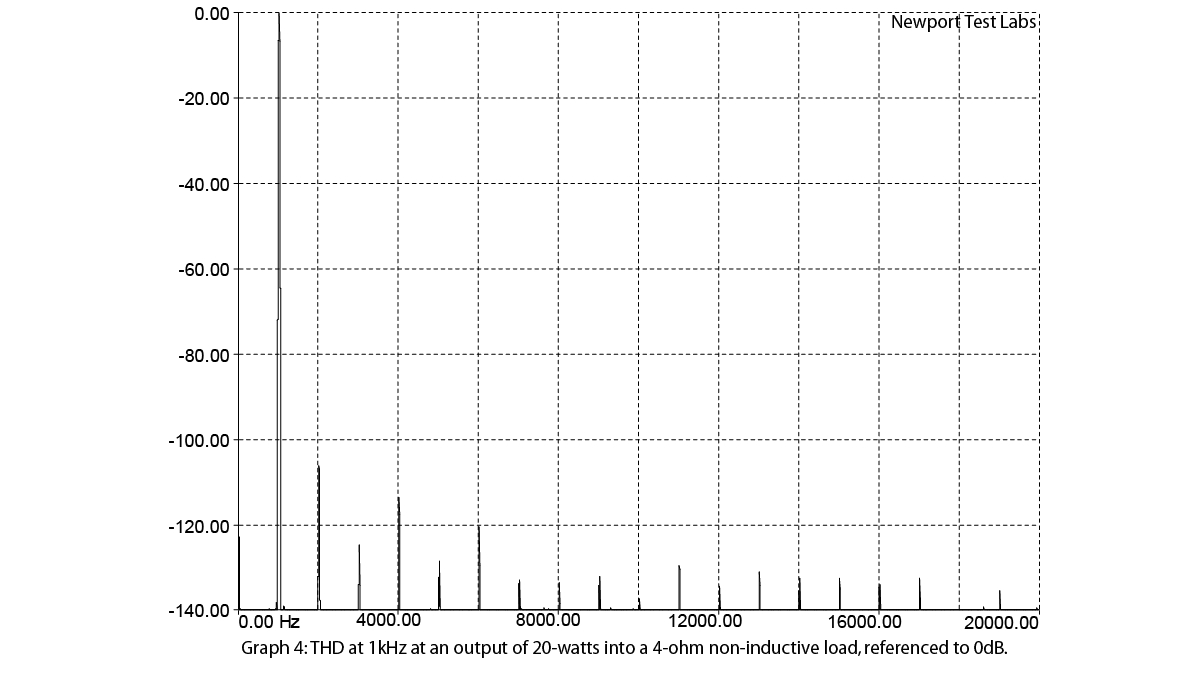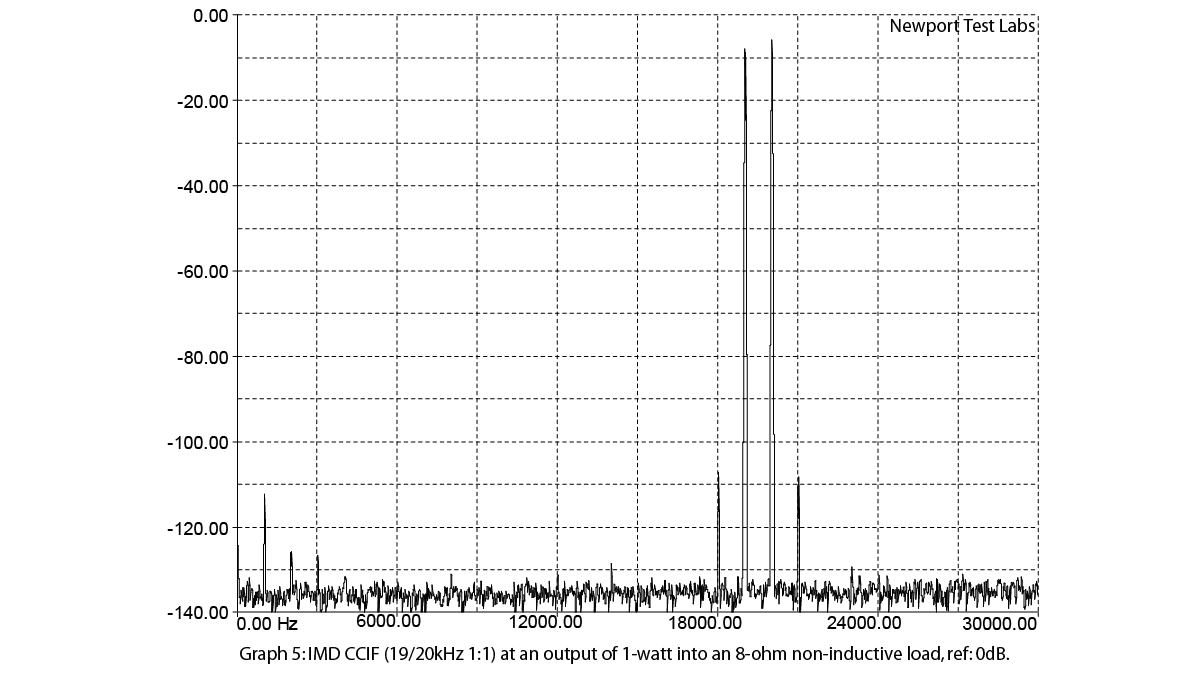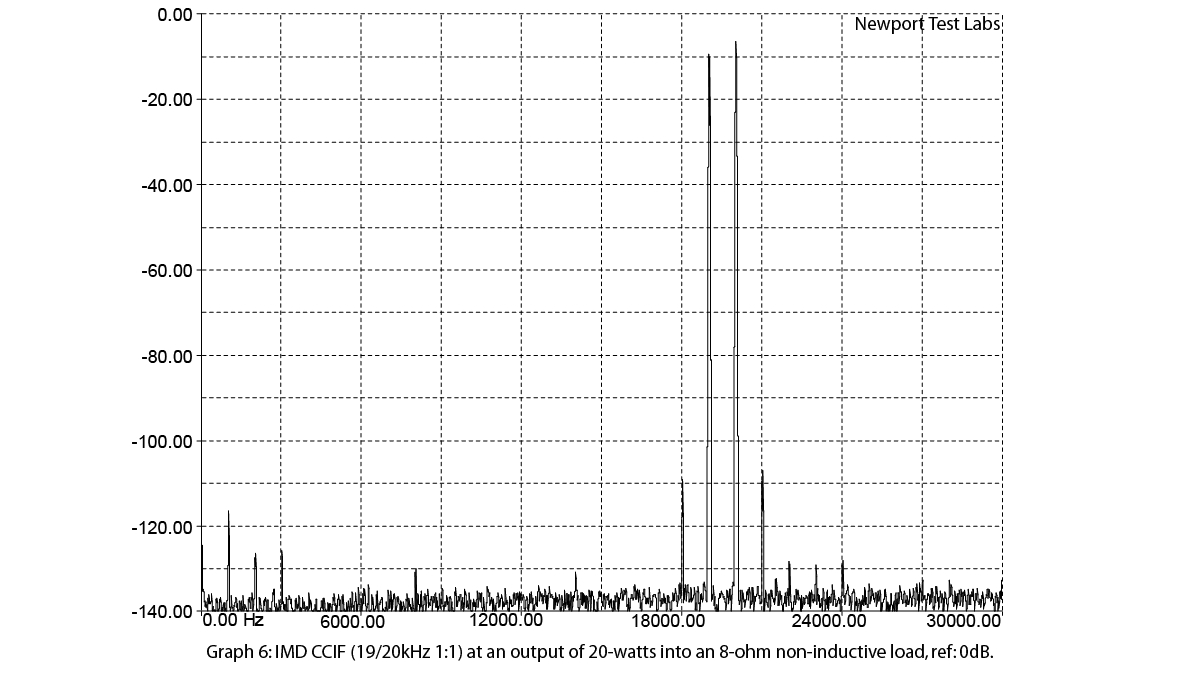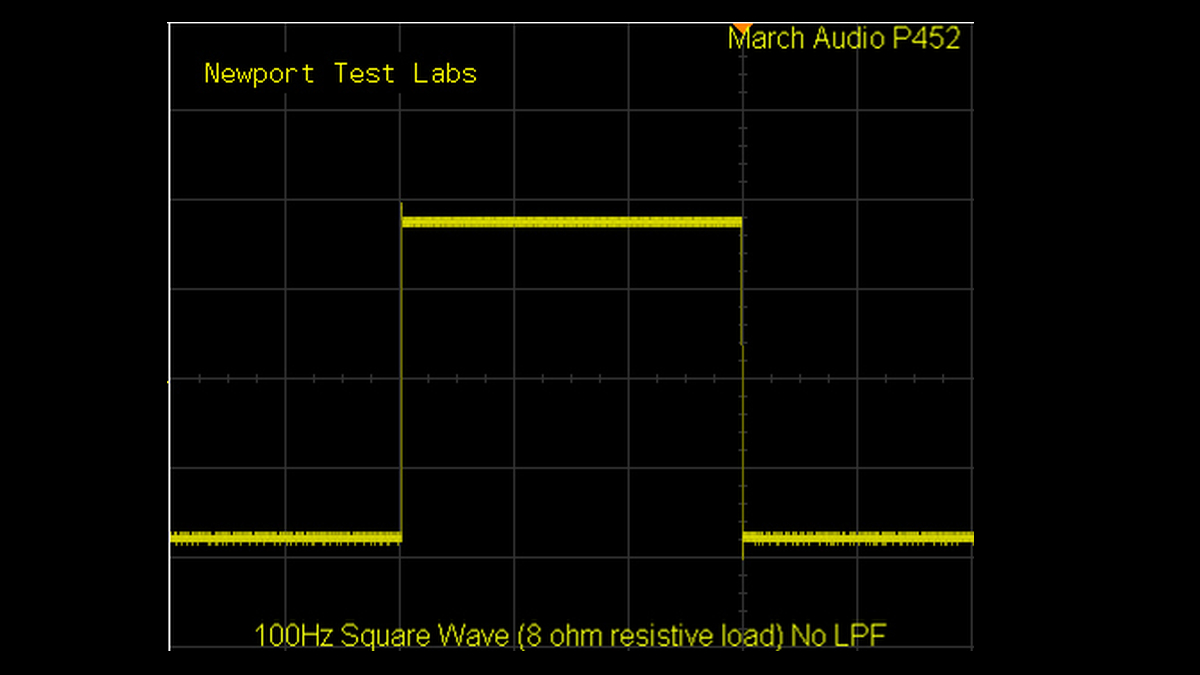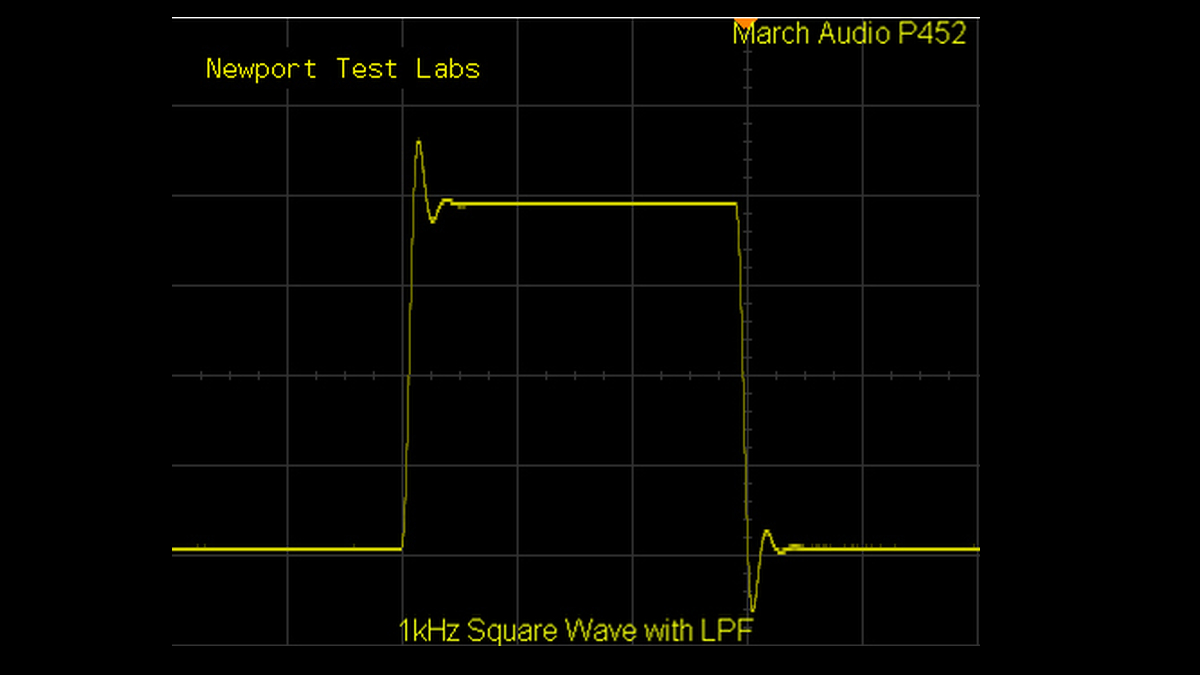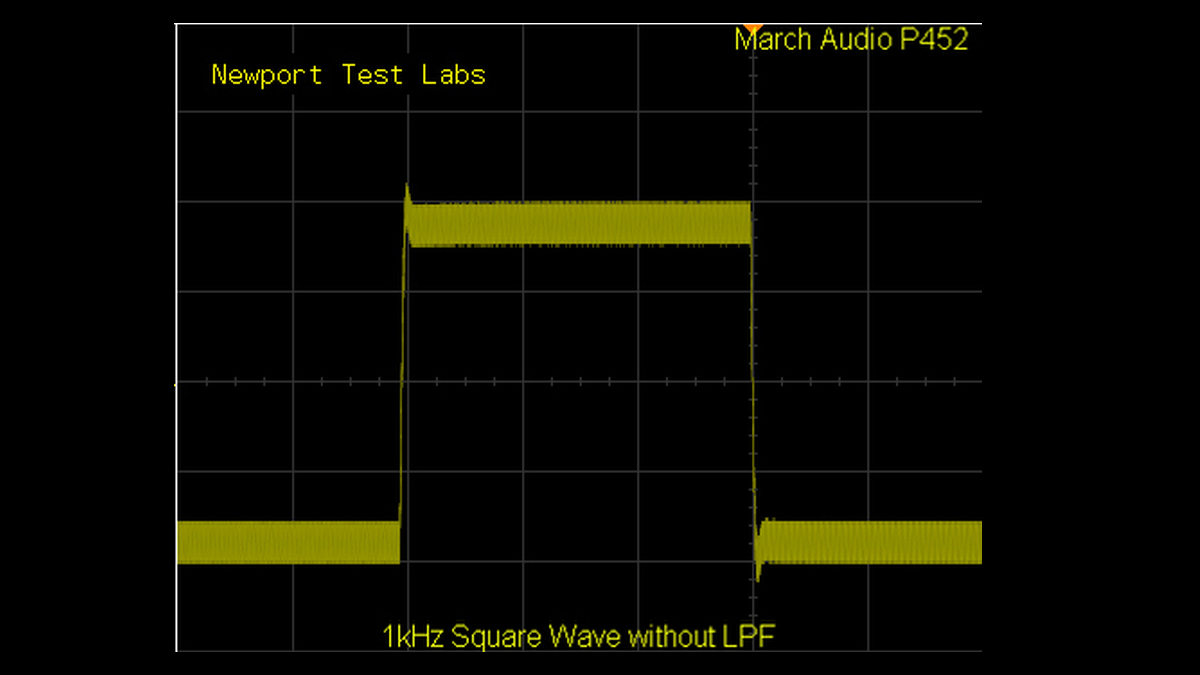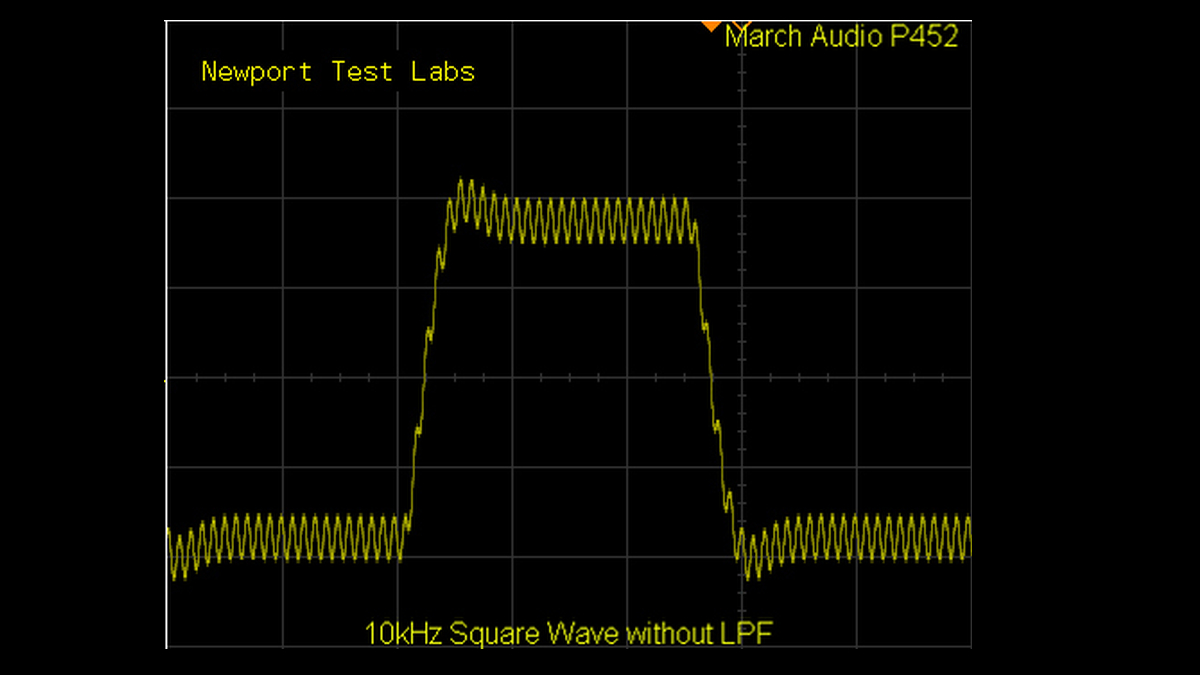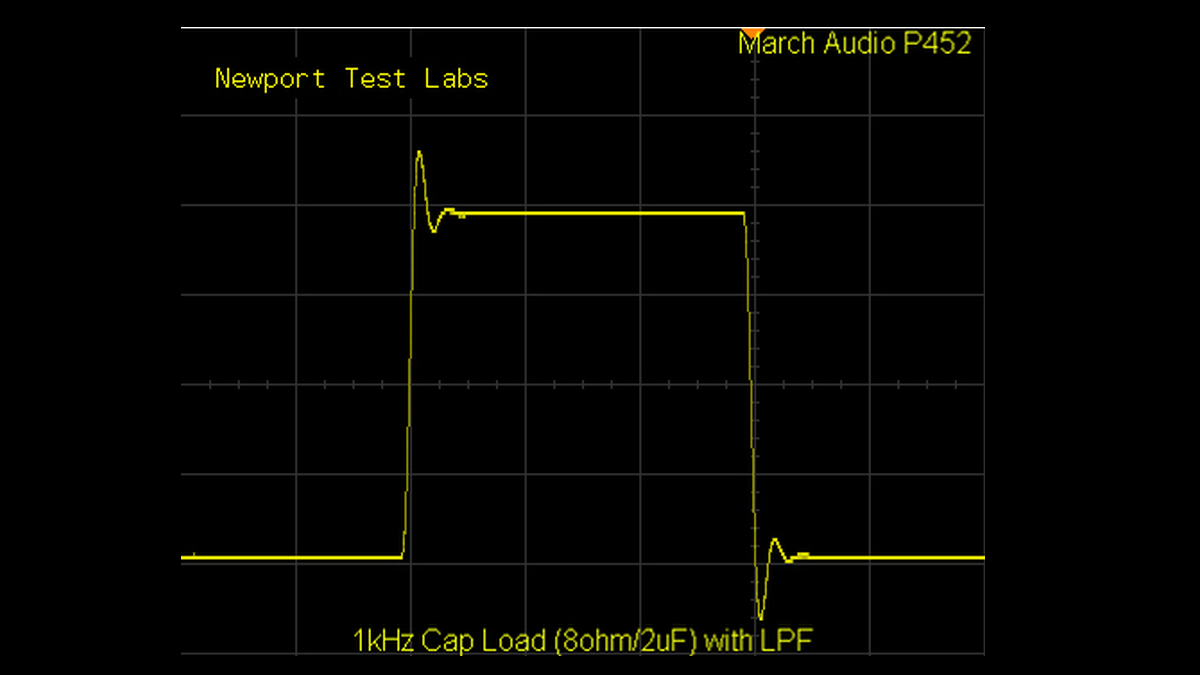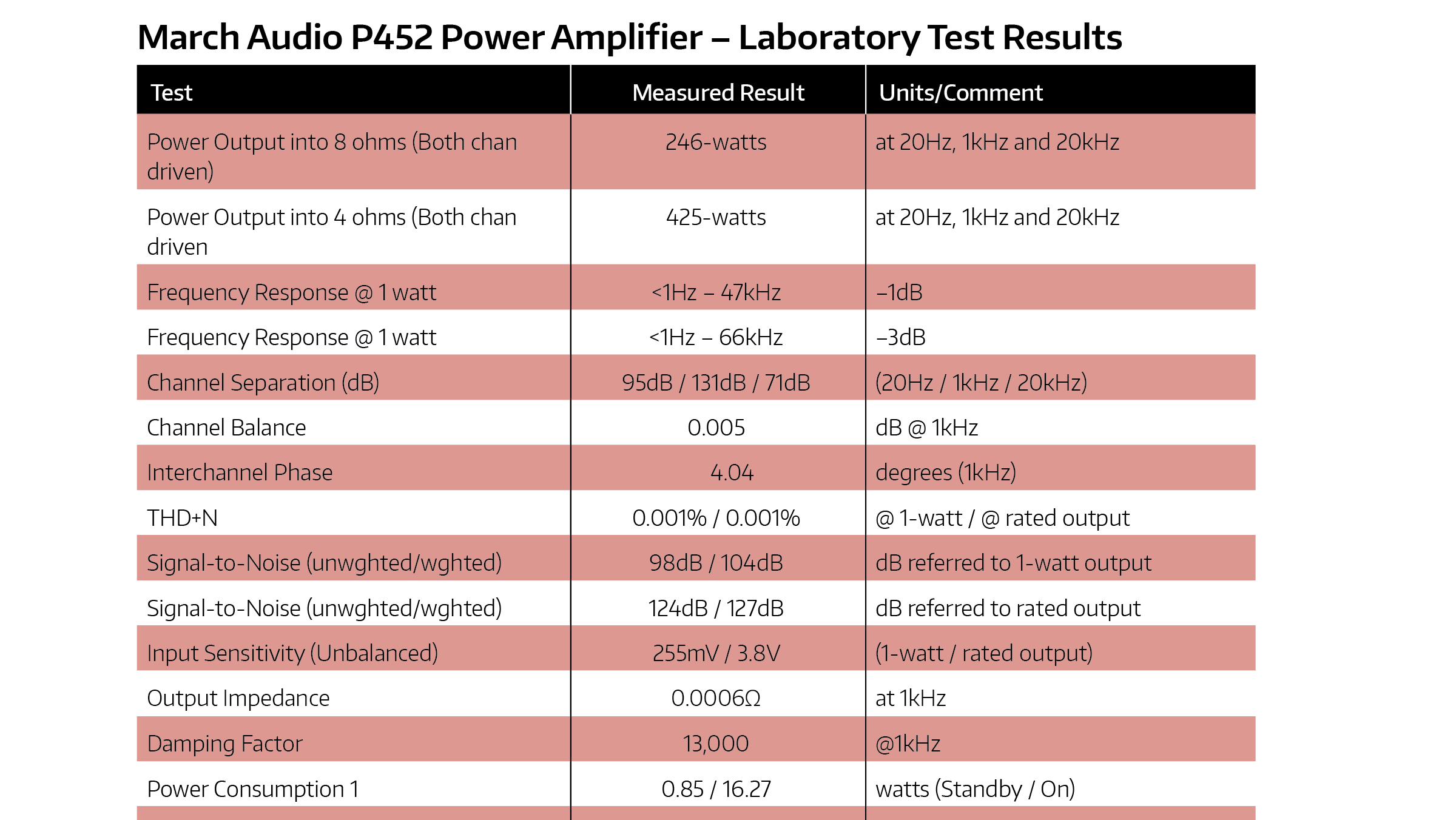What Hi-Fi? Verdict
This award-winning stereo power amplifier produces incredible sound for its compact size and quiet operation. Not only that, but it's a svelte and powerful unit and capable of driving any loudspeaker load.
Pros
- +
Multiple gain options
- +
High power output
- +
Superb sound quality
Cons
- -
Temperamental standby sensor
- -
No dedicated volume control
Why you can trust What Hi-Fi?

This review and test originally appeared in Australian Hi-Fi magazine, one of What Hi-Fi?’s sister titles from Down Under. Click here for more information about Australian Hi-Fi, including links to buy individual digital editions and details about how best to subscribe.
You’d be forgiven for not having heard of March Audio, because it’s a relatively new outfit, formed fewer than five years ago. It’s also based in Australia, which is a long way from anywhere.
But it’s not just based in far-off Australia, but out in a State in the far, far west of Australia, where even Australians rarely venture on holiday. In fact it’s so far west that it’s actually called West Australia.
On the basis that he’d chosen to found a high-end audio manufacturer in such a far-flung place, I had figured that March Audio’s founder, Alan March, was not Australian, and I was right. He hails from Great Britain and left a pretty good job to come to Australia, because after finishing an almost 20-year stint with Rolls-Royce Aeronautical, where he travelled all around the world recording noise, vibration and other data on everything from the Joint Strike Fighter in the United States to Concorde to all sorts of British military aircraft, he and his wife decided they wanted a sea change, and decided that Australia was the place to do it.
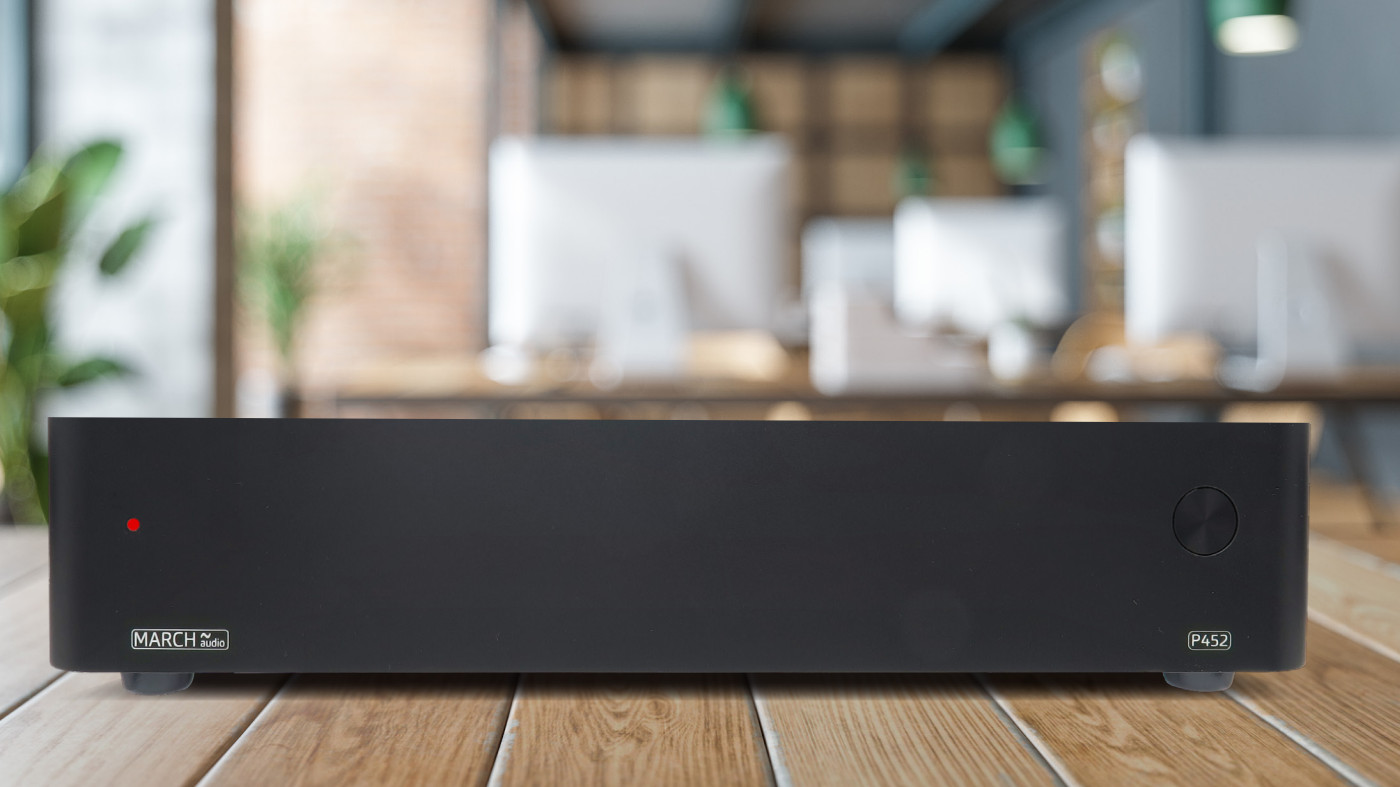
The reason they ended up in Western Australia is because Alan and his wife are both engineers (his wife is a civil engineer) and Western Australia has more employment opportunities for engineers than any-where else in Australia due to the number of mining companies based there.
So Alan switched from measuring noise and acoustics in aeroplanes to analysing the vibration and noise of the gas turbines and motors used in mining equipment… or at least he did until he tired of the fly-in/fly-out lifestyle and decided to start his own business, manufacturing hi-fi equipment.
This change in career wasn’t a big leap, because Alan had been passionate about music and hi-fi equipment since his teenage years, during which time he’d owned many of the ‘classic’ audio components made by the likes of NAD, Naim, Meridian and one of his favourites, TAG McLaren.
So it was hardly surprising that when Alan quit his day job in the mining industry, he would marry his engineering abilities with his love of music and build hi-fi equipment for a living. Thus it was that in 2018, March Audio came into being.
The latest hi-fi, home cinema and tech news, reviews, buying advice and deals, direct to your inbox.
It came into being with a bang, because Alan’s research had proved to him that the Class-A and Class-A/B amplifiers he’d loved listening to in his formative years had been superseded by Class-D amplifiers. And, the more he investigated Class-D circuits and topologies, the more it became evident that he’d be better off not re-inventing the wheel by developing his own proprietary Class-D circuitry, but by instead incorporating his own circuitry around pre-assembled Class-D modules.
“I did do a lot of research into the different sorts of Class-D modules available – ICE, Pascal and others – and it soon became very clear to me that the Hypex modules (designed by Bruno Putzeys) were superior technically, and in sound quality,” he says.
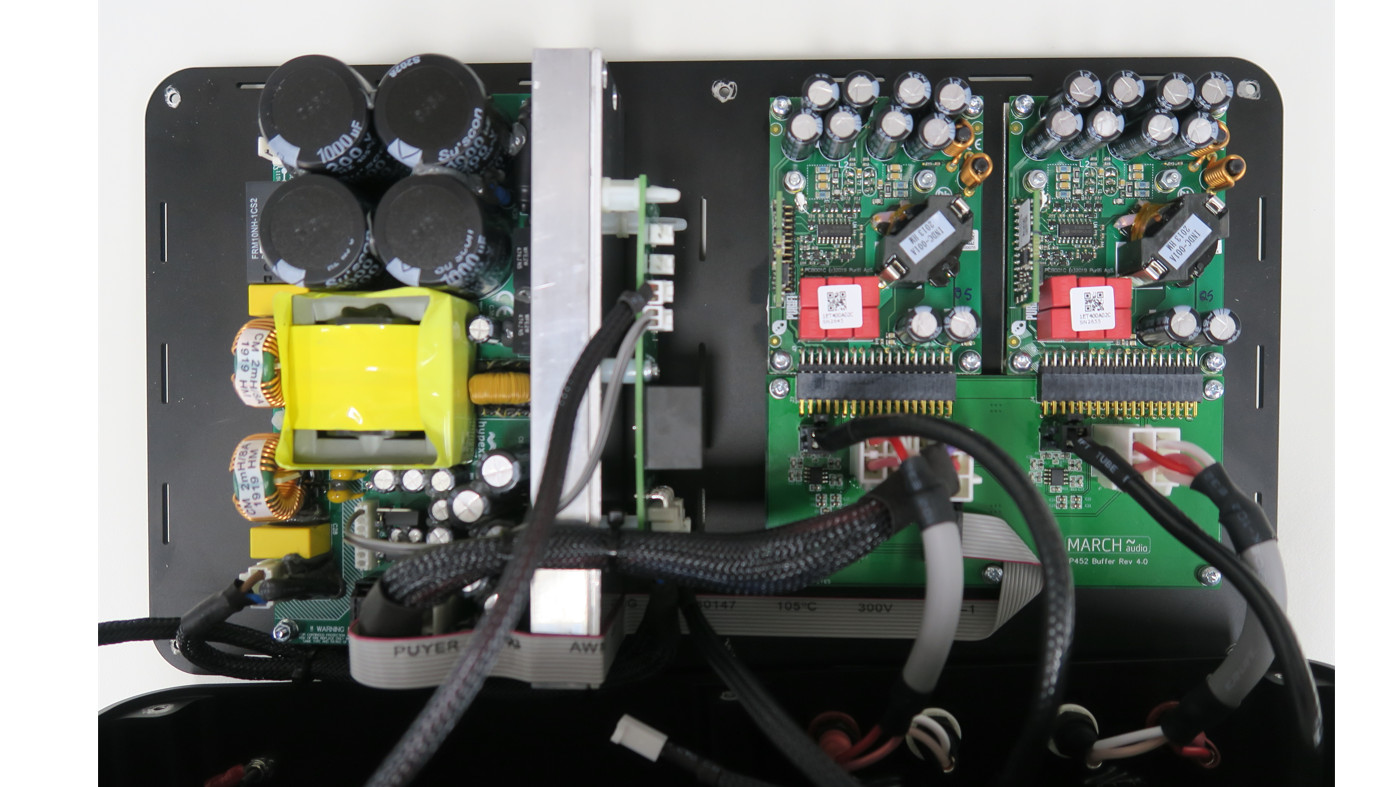
When Putzeys left Hypex to establish a new company (Purifi) and develop a new type of Class-D technology (Eigentakt), Alan decided to add use the new technology in several models in his amplifier range (he also continues to use Hypex modules in some models). “Purifi’s 1ET400A modules raise the bar both technically and subjectively over Bruno’s previous Hypex Ncore designs,” he says.
“They have a sweet extended high-frequency range with great power and definition and tightness in the bass.” “They are just neutral — but don’t think for one minute that ‘neutral’ means clinical or unengaging. They just let the music through. They deliver tremendous power output, have very low power consumption and run very cool in a very compact format. What more do you need?”
Well, you actually need a bit more, including a front-end for the PuriFi module, a chassis, and the ability to put it all together professionally, so this is what Alan did, and is how the March Audio P452 reviewed here came into existence.
Although the model number sounds like something Alan borrowed from his beloved aeronautical industry, the P indicates that it’s a power amplifier, the ‘45’ means that the amplifier is rated with a power output of 450-watts per channel (into 2Ω), and the ‘2’ means the amplifier has two channels. March says that the ready availability of Class-D modules has led to many companies taking short-cuts with how they integrate the modules into their amplifier designs.
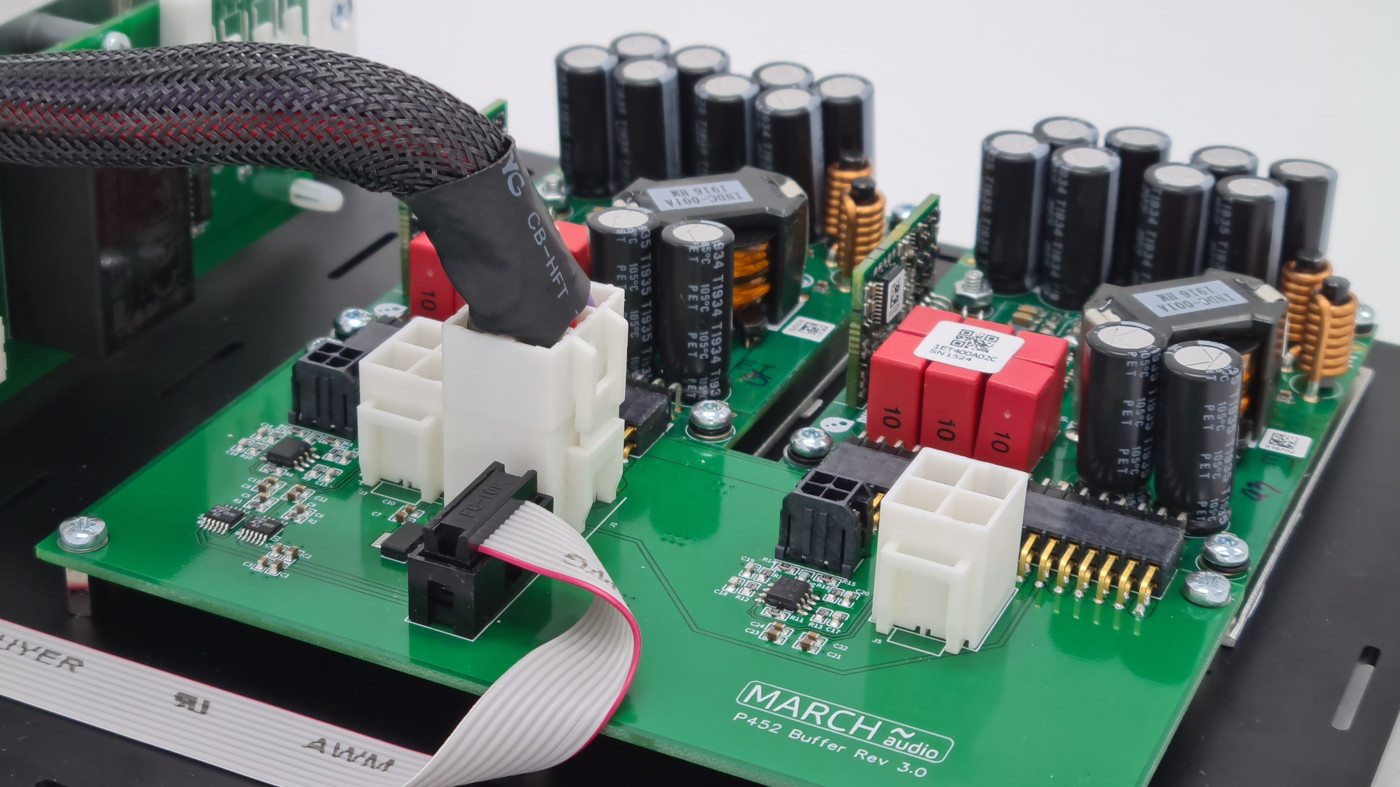
“I won’t be specific – but some of them don’t know what they’re doing,” he says. “They don’t have the background knowledge of electronics, signal integrity, and so on. Practically every single competitor to us does not even put r.f. filters on the front of the amplifier, they just connect them straight out to the outside world… and with Class-D, that’s a problem, because r.f. noise getting into the amplifier can intermodulate with the switching signal, and then you get ‘birdies’ and noise in the background. So it’s having a deeper fundamental understanding of electronics and signal processing and signal integrity that helps us differentiate ourselves.”
March also says that another aspect that differentiates him from his competitors is his pricing. “We use the same modules in our P701 that are used in the Mola Mola Kaluga, except that the P701 comes with one less zero on the price tag,” he says with a smile.
March adds that he’s even able to compete with audiophiles who are talented enough to build their own amplifiers using the Hypex or Purifi modules. “If you look at the total cost required to build an amplifier yourself, it’s not economically worth it. We’re charging not much above do-it-yourself prices, and for that you get an amplifier that’s professionally assembled, fully tested and guaranteed for three years, and all in a nice enclosure milled from a solid block of anodised aluminium that looks great.”
Features
I’d be the first to agree with Alan that his March Audio P452 looks great! The chassis is superbly finished, with not a single screw or joint anywhere to be seen (they’re all hidden underneath the amplifier), and no moving parts on the front panel – just a touch-sensitive switch for power management (i.e. ‘On’ and ‘Stand-by’) and a tell-tale power LED.
There is no mains power switch, either on the front panel or the rear, so if you want complete isolation from the 240V mains, remove the mains power cable.

On the rear panel the only moving parts are the very high-quality Kryo speaker terminals made by Australian company ETI Research (Eichmann Technologies International). And high quality though they are, these colour-coded multi-way solid copper gold-plated binding posts can be optionally upgraded to silver-plated tellurium copper conductors inside brass housings by special order.
The line input terminals are borrowed from the professional audio sphere, being combination phone-jack/XLR connectors. The amplifier measures only 360×200×85mm (WDH).
Rather than supply a printed Owner’s Manual, March Audio instead provides it on a high-quality metal-encased USB drive from which you can read directly, or copy to your hard drive and/or cloud storage.
Listening sessions
When you connect mains power to the P452, it goes straight into Standby, in which mode March Audio says it draws fewer than 0.2-watts from your mains power supply. To power it up, you simply touch the piezo sensor on the front panel, upon which the red LED on the front panel will start glowing and the amplifier will be operational.
Actually, although I said ‘simply touch’ the front panel sensor, you need to teach yourself how to use it because, as the Owner’s Manual says: “Please note that to prevent inadvertent operation, the power button is designed to be insensitive to light touch or objects brushing against it. A gentle tap or push is required to effect operation!”
This deliberate insensitivity meant that sometimes my carefully calibrated ‘tap’ didn’t work, nor did my multiple varied ‘pushes’. And sometimes it made a difference which finger I used to tap or push. My middle finger worked fine, my index finger… not so reliably! In the end, I discovered that by ‘wiping’ a finger over the sensor with a little pressure after first starting the ‘wipe’ movement on the aluminium to one side of the sensor resulted in an almost 100 per cent success rate.
Of course the P452 has a trigger input for power switching on the rear panel, so you could alternatively easily arrange for it to be turned on and off automatically by your pre-amplifier… or any trigger output.
I should emphasise at this juncture that when March Audio says the P452 has a power output of ‘450-watts per channel’, this power is only delivered when it is operating into the unusually low load resistance of just two ohms (2Ω). Almost all the world’s amplifier manufacturers state their amplifiers’ output power into a load resistance of 8Ω (though it’s not unheard-of for manufacturers to alternatively use 6Ω and 4Ω loads when they're making power output claims).
If March Audio were to use the ‘industry-standard’ resistance of 8Ω, it would rate the P452 with an output of 227-watts per channel (and presumably would have to re-name it a P222!). In fact it does state this 8Ω output in its specifications and on its website, along with the amplifier’s rated power into 4Ω, which is 425-watts per channel.
I should also emphasise at this juncture that when it comes to ordering a P452 for yourself, you have two options regarding the internal circuitry, because the amplifier can be pre-wired to deliver voltage gain of either 26.5dB or 20.5dB. You’d select the higher gain (26.5dB) option if you are using the P452’s unbalanced (phone) inputs and the lower gain option if you plan to connect to the P452’s balanced XLR inputs.
As you can see for yourself, the March Audio P452 does not have a volume control, so you’ll need to use it with a component that allows you to control volume, which would most obviously be a pre-amplifier, but these days many streamers, DACs, CD players etc, have hardware and/or software volume controls fitted, so you’ll have lots of options. I personally prefer my power amplifiers to have volume controls, but then again, I’m old-school.
And speaking of old-school, that’s how I started my listening sessions, with James Taylor’s ‘Sweet Baby James’ which not only kicked off the seventies but was also one of the very first albums I ever purchased, so it has a place dear in my heart.
It holds a place dear to my heart despite the fact that I really only liked a few tracks on the album and back then little suspected how successful Mr Taylor would become.
The title track was one of those I liked, with its quiet majesty and lovely Hawaiian guitar and it was delivered marvellously well by the March Audio P452. Despite this not being a track with much in the way of dynamics, I was impressed by how dynamic the P452 sounded when reproducing it, even though at this stage I wasn’t helping by playing at almost background music levels. The March Audio P452 just played the music so fluidly and so freely that the whole really became more than the sum of the parts. Frankly, it was immediately obvious that I was going to enjoy my time with the P452.
Indeed I was so impressed that rather than skipping to Fire and Rain, like I usually do, I let Lo and Behold start issuing from my speakers and became captivated by its sound as well. Indeed I not only began to appreciate how good a song it is but also how many of its motifs would turn up in later of Taylor’s compositions. Listen to the progression that concludes this track, for example. You’ll recognise it immediately.
Still captivated by the sound of the March Audio P452, I let Sunny Skies play through and, as it did so, reflected on how great was the sound of Taylor’s acoustic guitar that I was hearing. Yep, a lot of the sound quality was because of the clarity of the P452, but it had a really good capture to work with in the first place. Why can’t they record acoustic guitar like that these days?
When I finally did get to Fire and Rain, I was totally on-board with the sound of the P452, which was just doing everything perfectly. The lovely sound of the cymbals (again beautifully recorded), the bass, Taylor’s guitar and, of course, one of the best baritones in the music business — back then and still. It’s probably my favourite song of his, though Carolina on my Mind, comes a close second.
If you listen to this track with a P452, pay particular attention to the sound of the drum kit and to the glorious sound of that double bass. The richness and depth of the sound of those long strings are reproduced perfectly by the P452.
Because the P452 had hinted that it was going to be able to deliver enormous dynamic range, I just had to test it with one of the ‘textbook’ tracks for this undeniable virtue, which is the Pixies’ Tame, (from ‘Doolittle’) which starts with a simple drum beat, a simple bass line and a whispered vocal then suddenly erupts into an attack of guitars and ferociously screamed vocals.
Listen particularly to the final moment of the track, particularly if you’ve turned the volume to ‘stun’ because in that final moment you’ll hear nothing… nothing at all. Which is exactly how it should be. The P452 is so super-quiet it’s almost supernatural.
One of my tests for rhythm and pace is Discrete Circuit’s strangely catchy Machine Code, because the precision of the timing is integral to the success of the off-kilter stabs and to allow you to appreciate the intricacies of the myriad rhythms. Even if you’re not a fan of techno I can absolutely guarantee your feet will be tapping and you’ll be getting right into the groove after only a few moments. At least you will if the amplifier you are using is up to the challenge, and the March Audio P452 proved to me that it very certainly was up for it. Big time!
I thought it was time to try out the P452 with a much bigger and more expansive sound field and could think of no better album to play than Julien Baker’s latest release, ‘Little Oblivions’. Right from the opener Hardline the spread of the soundfield was amazing — height, width, depth and a glorious stability, yet still with the Baker’s voice positioned exactly where it should be, front and centre. The clarity of the P452’s delivery is such that you can hear the mistake in recording the vocal at 3:02, tiny and brief though it is. Few amps are as revealing as this.
My favourite track from this new album is the understated Song in E, but every time I listen to it I can’t help but imagine how much better it would have sounded with just a real solo piano accompaniment. This would have made the lyric more disturbing than it already is, and would have been an effective counterpoint for Baker’s breathy but brilliantly pitched vocal.
But that said, every time I get to the closer, Ziptie, I can’t help but wonder that she’s playing everything I’m hearing.
Final verdict
I wasn’t at all surprised to hear that the March Audio P452 had won the prestigious Sound & Image magazine award for ‘Power Amplifier of the Year Under $5,000 (2020–2021)’. It’s a stunningly good power amplifier at an amazingly low price. #
Sound & Image Magazine 2020-2021 award-winning amplifiers
In-depth laboratory test results
Newport Test Labs measured the power output of the March Audio P452 as being 246-watts per channel, both channels driven into 8Ω, which is a little more than March Audio claims, and 425-watts per channel, both channels driven into 4Ω, which is exactly in accordance with March Audio’s specification.
The amplifier returned identical results when a single channel was driven and was able to deliver these high power output levels irrespective of the test frequency, with Newport Test Labs measuring identical results at 20Hz, 1kHz and 20kHz.
These very high power output results mean that the March Audio P452 is easily capable of delivering more clean power – both continuously and dynamically – than will ever be required in any home hi-fi system, irrespective of the sensitivity or the impedance of whatever loudspeakers you connect to it.
The balance between the left and right channels was amazingly close, as you can see from the results tabulated in the Test Result table of laboratory results. I think I can be absolutely certain in stating that the P452’s measured result of 0.005dB is the best the lab has ever measured for a power amplifier – or any other type of amplifier for that matter.
Channel separation was outstandingly good at 1kHz, with Newport Test Labs measuring it at 131dB. It was still excellent at 20Hz (95dB) and still a very good result – 71dB, which more than you’ll ever need – at 20kHz.
Newport Test Labs measured the wideband frequency response of the March Audio P452 as extending from less than 1Hz to 47kHz –1dB, and from less than 1Hz to 66kHz –3dB. The result within the audio band was even better again, as shown in Graph 7. You can see that the frequency response is absolutely ruler-flat from 20Hz to 20kHz and is just 0.5dB down at 40kHz and barely 0.1dB down at 5Hz.
The response shown in Graph 7 (above) was measured using a laboratory-standard non-inductive load. Newport Test Labs also measures frequency response into a load that simulates the one that would be presented by a typical two-way bookshelf loudspeaker and indeed did so in the case of the March Audio P452, but the result was so absolutely identical to the one measured into the non-inductive load that the two traces could not be isolated from each other on a graph, no matter what the vertical scaling, so it has not been included as it normally would have been.
This performance into the simulated loudspeaker load suggested that the output impedance of the P452 would be very low, but I was stunned to find to see that Newport Test Labs measured it as being just 0.0006Ω! This is the lowest output impedance I have ever seen on any audio amplifier… and means that the amplifier’s damping factor would be 13,000! This is many orders of magnitude better than any other amplifier of which I have ever heard: Most have damping factors of less than 1,000… and often less than 100.
I was also amazed by the low levels of distortion – and noise! – measured by Newport Test Labs, which you’ll be able to see for yourself in the graphs. Graph 1, for example shows distortion at an output of one watt into an 8Ω load, with a 1kHz test signal. You can see the fundamental at 1kHz reaching up to 0dB, after which there’s a second harmonic at around –105dB (0.0005623%), a third harmonic at –118dB (0.0001259%), and a fourth at –112dB (0.0002512%). As you can see, there are a few higher-order harmonically-related distortion components visible on the graph, but as they’re all more than 120dB (0.0001%), they can be disregarded.
Perhaps the biggest take-away from Graph 1 is the noise floor across the audio band which, at –140dB, is amazingly low. Also totally remarkable is the lack of mains-frequency noise, which is usually omni-present to the left of the fundamental. I thought I could make out a single signal (probably 50Hz) that is 120dB down, but that’s it. Nothing else. This is amazingly low noise.
Because of this, I thought I should mention the tabulated signal-to-noise ratios rather earlier in my report than I usually do, and sure enough, referenced to an output of one watt, Newport Test Labs measured the March Audio P452’s S/N ratio at 98dB unweighted, and 104dB A-weighted. Referenced to rated output, these already excellent results improved to 124dB unweighted and 127dB A-weighted. This is an amazingly quiet amplifier.
The only caveat for these figures is that they refer only to noise below 20kHz because, of course, being a Class-D design, high-frequency noise levels are very, very high. Indeed above 500kHz, noise levels can be measured in hundreds of millivolts, rather than in dozens of microvolts, as would be the case with any linear amplifier (Class A, Class A/B, Class G, etc). This meant that Newport Test Labs had include a low-pass filter in the measurement set-up to filter out everything above 20kHz, which wouldn’t be the case with a linear amplifier.
Graph 2 shows the P452’s distortion spectra when the amplifier is delivering one watt into a 4Ω load and the result is, for all intents and purposes, identical to its performance into 8Ω, with a slightly higher second harmonic and a slightly lower third harmonic. Since both of these harmonics are musically benign (in that the second harmonic is the octave of the fundamental, and the third harmonic is the perfect fifth) neither would be significant even if they were audible.
Measured at an output of 20-watts per channel into 8Ω (above), the levels of the second and fourth-order harmonic distortion components remained essentially the same, while the levels of the third-order and fifth-order components dropped down to below –120dB (0.0001%). Additional higher-order harmonic distortion components are now visible on the graph but they’re all more than 120dB down and many are more than 130dB down (0.00003%).
Note that in Graph 3, the noise floor of the amplifier has dropped to be more than 140dB down over the audio band, except for a single low-frequency component that’s hard against the left vertical of the graph itself – again likely a 50Hz mains component – that is around 122dB down (0.0000794%). This is amazingly good performance.
Driven into 4Ω loads at 20-watts, the lower-order distortion components visible on the graph are very similar to those returned when the amplifier is driving 8Ω loads, which is excellent. You can see that there are more higher-order harmonic distortion components when driving the lower impedance load, but all are more than 130dB down, or 0.00003%, where they would be completely inaudible.
Intermodulation distortion (IMD) at an output of one watt is shown in Graph 5. The twin IMD test signals (at 19kHz and 20kHz) are shown to the right of graph centre. As you can see, there are only two sidebands, one at 18kHz and the other at 21kHz, the former at –107dB (0.0004467%) and the latter at –108dB (0.0003981%). There is also a regenerated difference signal at 1kHz, but this is down at –112dB (0.0002512%). There are also two harmonics of the regenerated signal, one at 3kHz, the other at 5kHz, but both are at around –125dB (0.0000562%).
creasing the output power to 20-watts using the same CCIF test signal, you can see (Graph 6, above) that the regenerated 1kHz level has actually reduced in level somewhat, but the difference is so small it’s in the realms of measurement error. Again, this is an excellent result. Note that the use of high-level, high-frequency test signals seems to have increased the level of the audio band noise floor slightly, so it’s sitting just above –140dB. This is of academic interest only – it will have no bearing on the sound quality of the amplifier.
As you’d expect, all of the square waves show artefacts that are directly caused by the P452’s Class-D output stage and its switch-mode power supply.
The 100Hz square wave oscillogram above was measured without a 20kHz low-pass filter and as a result you can see the amplifier’s high-frequency signal has ‘thickened’ the horizontals. If we zoomed in on this thickening, it would become a wavy line, showing intermodulation. You can see a slight overshoot on the leading edge, which usually indicates a non-flat frequency response above 20kHz.
The square wave above (SQW2) shows the output of the P452 when it’s reproducing a 1kHz square wave, but this time the output has been filtered by a 20kHz low pass filter (LPF) to remove the high-frequency information. The ringing you see on the waveform is caused by this filter, so you should ignore it. You can see that the filtered square wave is almost exactly what you’d expect to see from a high-quality Class A/B amplifier.
The square wave above (SQW3) shows exactly the same 1kHz signal as SQW2, but this time without the low-pass filter in circuit, so you can see the interference caused by the Class-D circuitry, this time more significant because of the frequency of the test signal.
SQW4 (above) shows performance with a 10kHz square wave, without a low-pass filter in circuit, necessarily because of the high frequency of the test signal. The very high frequency of the test signal makes the intermodulation obvious of course, but you can see that the underlying 10kHz waveform is very good, with a moderately fast rise time, and only modest overshoot, given the amplifier’s frequency response.
The square wave above shows the P452’s performance when it’s driving a highly capacitative load, designed to simulate a highly reactive loudspeaker (the load is 8Ω in parallel with a 2µF capacitor). This was measured with a low-pass filter in circuit as well, and you can see that it’s almost identical to the waveform measured when the amplifier was driving the non-inductive resistor, so you can be sure that the March Audio P452 will drive any loudspeaker.
The March Audio P452 power amplifier draws less than 1-watt when it’s in its standby mode, so it would be fine to leave it in standby whenever you’re not using it, but I would recommend that you switch it off if you won’t be using it for a week or more (advice that applies to all audio components, not just the P452).
The P452 is very efficient when it’s operating, as you can see for yourself from the tabulated figures in the table above, so that most of the time it will be pulling fewer than 40-watts from your household mains, even at maximum volume.
The March Audio P452 is capable of easily delivering extremely high power into all loudspeaker loads, has extraordinarily low levels of noise and distortion, both THD and IMD, a super-flat frequency response, and the highest damping factor Newport Test Labs has ever measured. I think I need say no more!
Australian Hi-Fi is one of What Hi-Fi?’s sister titles from Down Under and Australia’s longest-running and most successful hi-fi magazines, having been in continuous publication since 1969. Now edited by What Hi-Fi?'s Becky Roberts, every issue is packed with authoritative reviews of hi-fi equipment ranging from portables to state-of-the-art audiophile systems (and everything in between), information on new product launches, and ‘how-to’ articles to help you get the best quality sound for your home.
Click here for more information about Australian Hi-Fi, including links to buy individual digital editions and details on how best to subscribe.
